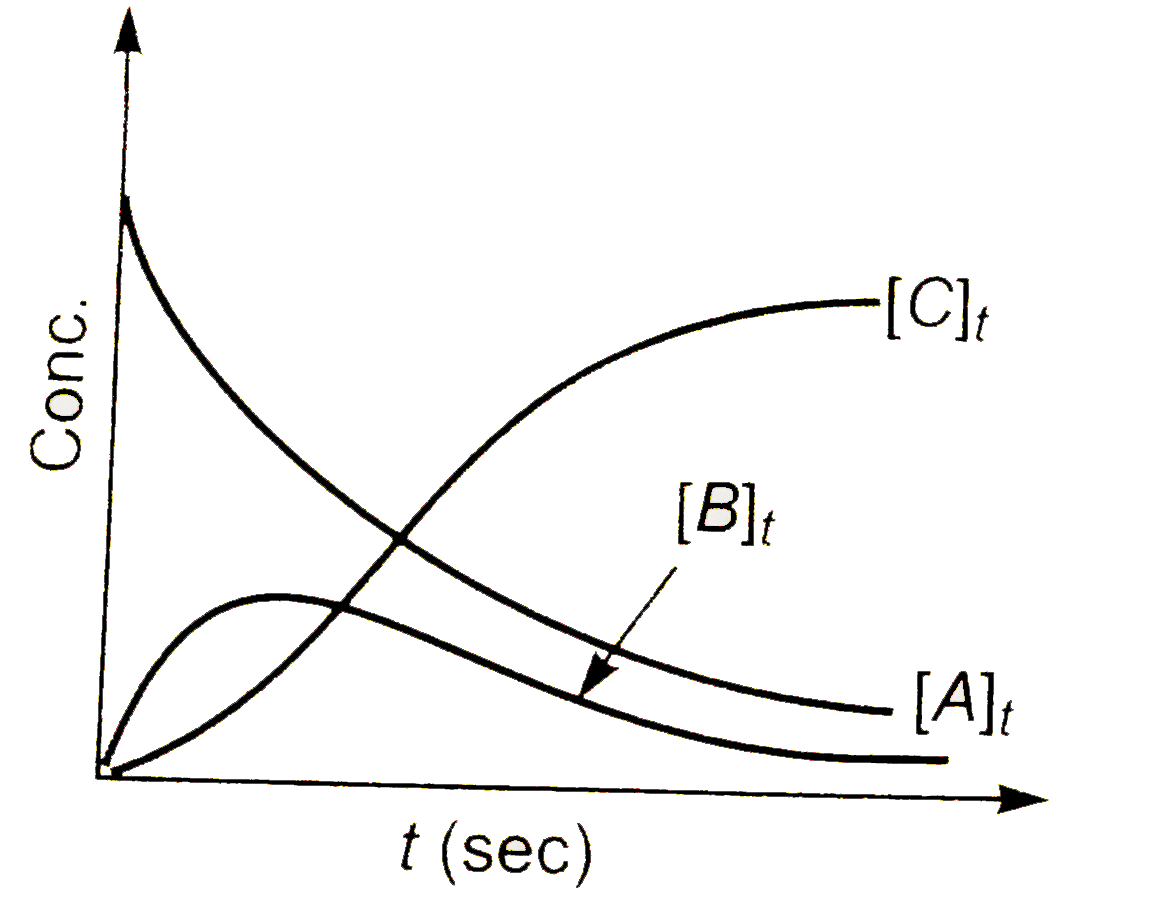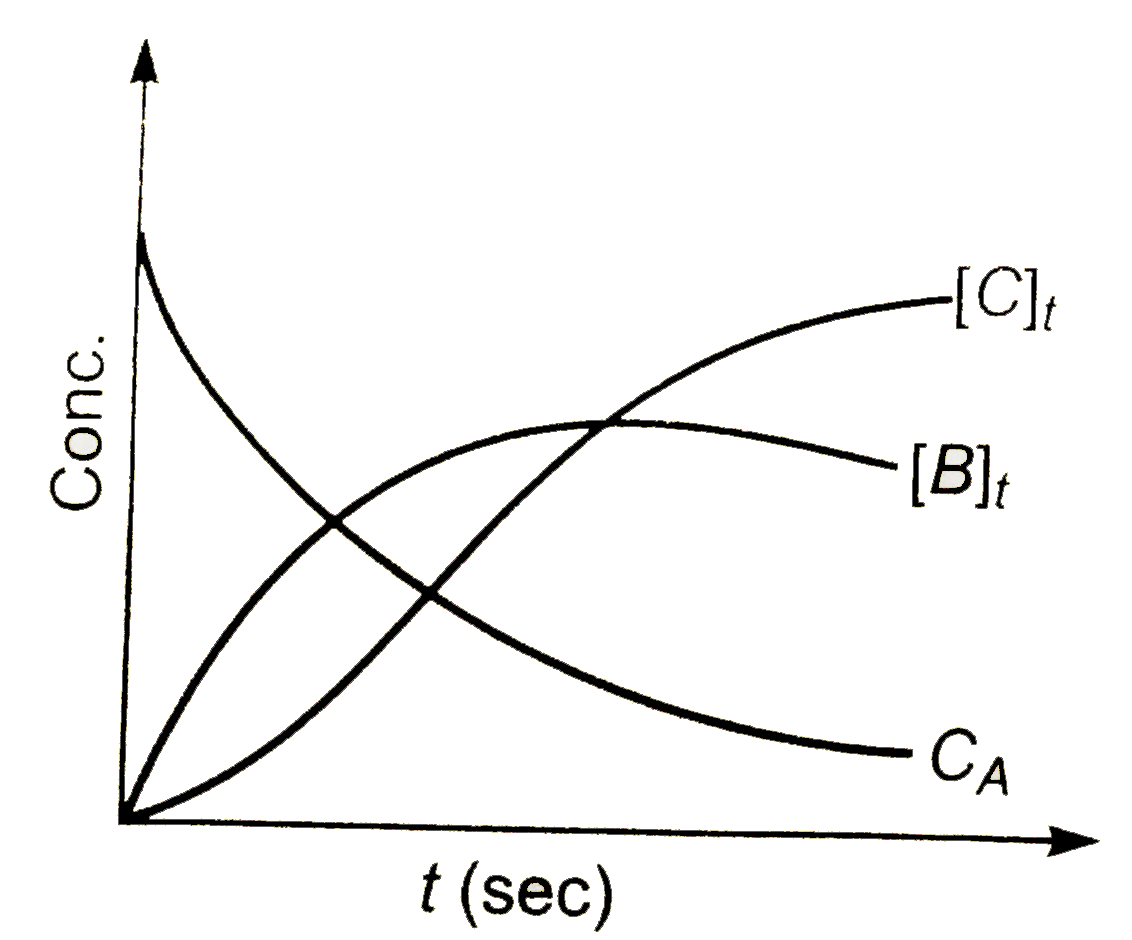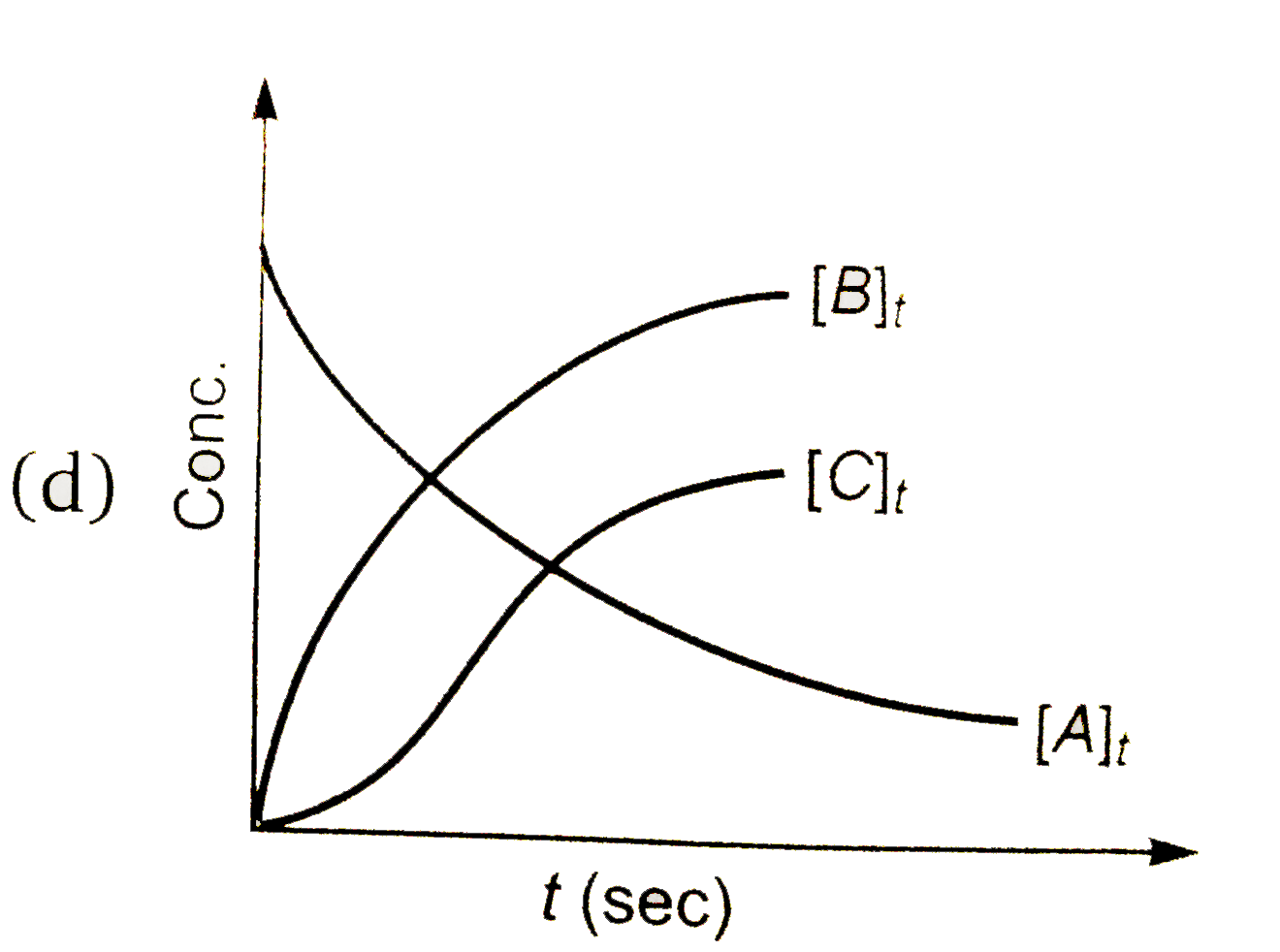In the series reaction
AK1−−→BK2−−→CK3−−→D , if K1>K2>K3 then the rate determing step of the reaction is
a) A→B
b) C→D
c) B→C
d) Any step Solution in Punjabi
A→B
C→D
B→C
Any step
The correct Answer is:B
Step by step video & image solution for In the series reaction Aoverset(K_(1))(rarr)Boverset(K_(2))(rarr)Coverset(K_(3))(rarr)D , if K_(1)gtK_(2)gtK_(3) then the rate determing step of the reaction is a) ArarrB b) CrarrD c) BrarrC d) Any step by Chemistry experts to help you in doubts & scoring excellent marks in Class 12 exams.
Topper's Solved these Questions
- BOOK - NARENDRA AWASTHICHAPTER - CHEMICAL KINETIC & NUCLEAR CHEMISTRYEXERCISE - Level 2 (Q.33 To Q.35)2videos
CHEMICAL KINETIC & NUCLEAR CHEMISTRY
- BOOK - NARENDRA AWASTHICHAPTER - CHEMICAL KINETIC & NUCLEAR CHEMISTRYEXERCISE - Level 3 - Passage1videos
CHEMICAL KINETIC & NUCLEAR CHEMISTRY
- BOOK - NARENDRA AWASTHICHAPTER - CHEMICAL KINETIC & NUCLEAR CHEMISTRYEXERCISE - Level 21videos
CHEMICAL KINETIC & NUCLEAR CHEMISTRY
- BOOK - NARENDRA AWASTHICHAPTER - SURFACE CHEMISTRYEXERCISE - Level -21videos
SURFACE CHEMISTRY
Similar Questions
In a sample of wood, the reading of a counter is 32 dpm and in a fresh sample of tree it is 122dpm . Due to error counter gives the reading 2 dpm in absence of .14C . Half life of .14C is 5770 years .
The approximate age (in years) of wood sample is :04:07View SolutionTwo consecutive irreversible first order reactions can be represented by
Ak1−−→Bk2−−→C
The rate equation for A is readily interated to obtain
[A]t=[A]0.e−k1t , and [B]t=k1[A]0k2−k1[e−k1(t)−e−k2(t)]
When k1=1s−1 and k2=500s−1 , select most appropriate graph
a) b)
b) 
c) d)
d)  View Solution
View SolutionThe forward rate constant for the elementary reversible gaseous reaction
C2H6<⇒2CH3is1.57×10−3s−1at100K
What is the rate constant for the backward reaction at this temperature if 10−4 moles of CH3 and 10 moles of C2H6 are present in a 10 litre vessel at equilibrium .
a) 1.57×109Lmole−1s−1
b) 1.57×1010Lmole−1s−1
c) 1.57×1011Lmole−1s−1
d) 1.57×107Lmole−1s−101:55View Solutionfor the graph below, select correct order of temperture ?
 View Solution
View SolutionThe steady state concentration of the activated molecule [A**] in the following sequence of steps is given by: A + A overset(k_(1))(rarr)A+A^(**)A^(**)+Aoverset(k_(2))(rarr)2A
01:18View SolutionIn the series reaction Aoverset(K_(2))(rarr)Boverset(K_(2))(rarr)Coverset(K_(2))(rarr)D , if K_(1)gtK_(2)gtK_(3) then the rate determing step of the reaction is
02:28View SolutionTwo consecutive irreversible fierst order reactions can be represented by
Ak1−−→Bk2−−→C
The rate equation for A is readily interated to obtain
[A]t=[A]0.e−k1t , and [B]t=k1[A]0k2−k1[e−kt1−e−kt2]
When k1=1s−1 and k2=500s−1 , select most appropriate graph01:53View SolutionTwo consecutive irreversible fierst order reactions can be represented by Aoverset(k_(1))(rarr)Boverset(k_(2))(rarr)C The rate equation for A is readily interated to obtain [A]_(t)=[A]_(0).e^(-k_(1^(t))) , and [B]_(t)=(k_(1)[A]_(0))/(k_(2)-k_(1))[e^(-k_(1)^(t))-e^(-k_(2)^(t))] If k_(1) and k_(2) both are almost same then which graph is most suitable ?
04:23View SolutionIn the sequence of reaction,
Lk1−−→Mk2−−→Nk3−−→O
k3>k2>k1
The rate determining step of the reaction is :04:25View SolutionFor hypothetical reaction A→B takes placed according to
Ak1⇐⇒C(fast),A+Ck2−−→D(slow)
Rate law will be :03:25View SolutionA reaction ArarrB , involes following mechanism : Step1 : Aoverset(k_(1))rarrB" "("fast") Step2 : Boverset(k_(2))rarrC " "("slow") Step3: Coverset(k_(3))rarrD " "("fast") The rate law of the reaction may be given as :
02:52View SolutionThe mechanism of the reaction A+2B rarr C+D is: Step I: A+B underset(k_(2))overset(k_(1))hArr I Step II: B+I overset(k_(3))rarr C+D In the first step is a fast equilibruim , then the incorrect statement is :
01:49View SolutionDecomposition of A to give B follows a two step mechansim as shown. From the mechanism identify the option which is incorrect. A rarr 1.5 B" " (overall reaction) Steps-1: A underset(k_(2))overset(k_(1))hArr B+C" " (fast) Step-2: A+C overset(k_(3))rarr 2B" " (slow)
03:23View SolutionThe equilibrium constant for a reaction at room temperature is K_(1) and that at 700 K is K_(2) . If K_(1)gtK_(2) , then
10:45View SolutionIn the sequence of reaction
AK1−−→BK2−−→CKc−−→D,K3>K2>K1 then the rate determining step of the reaction is06:23View Solution

